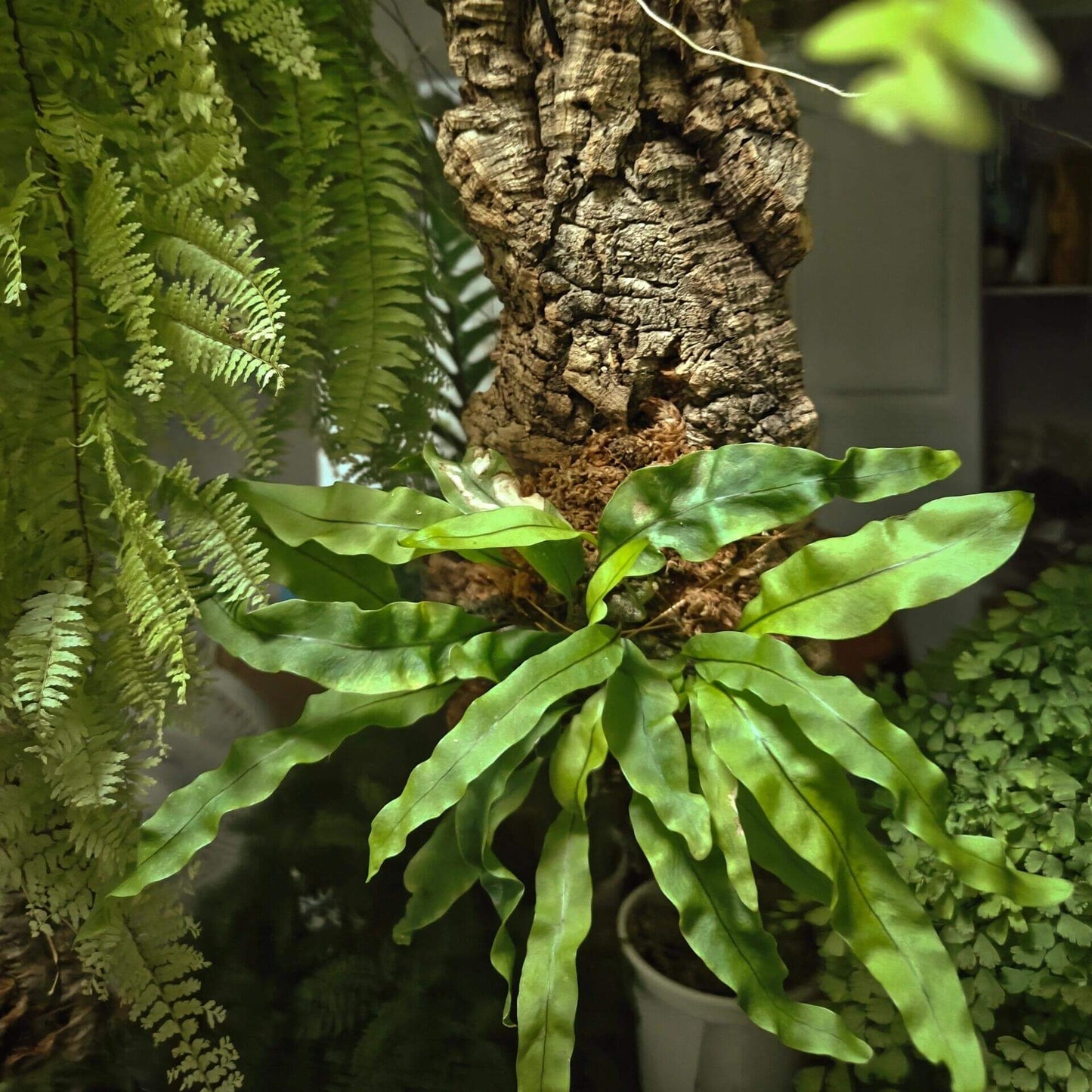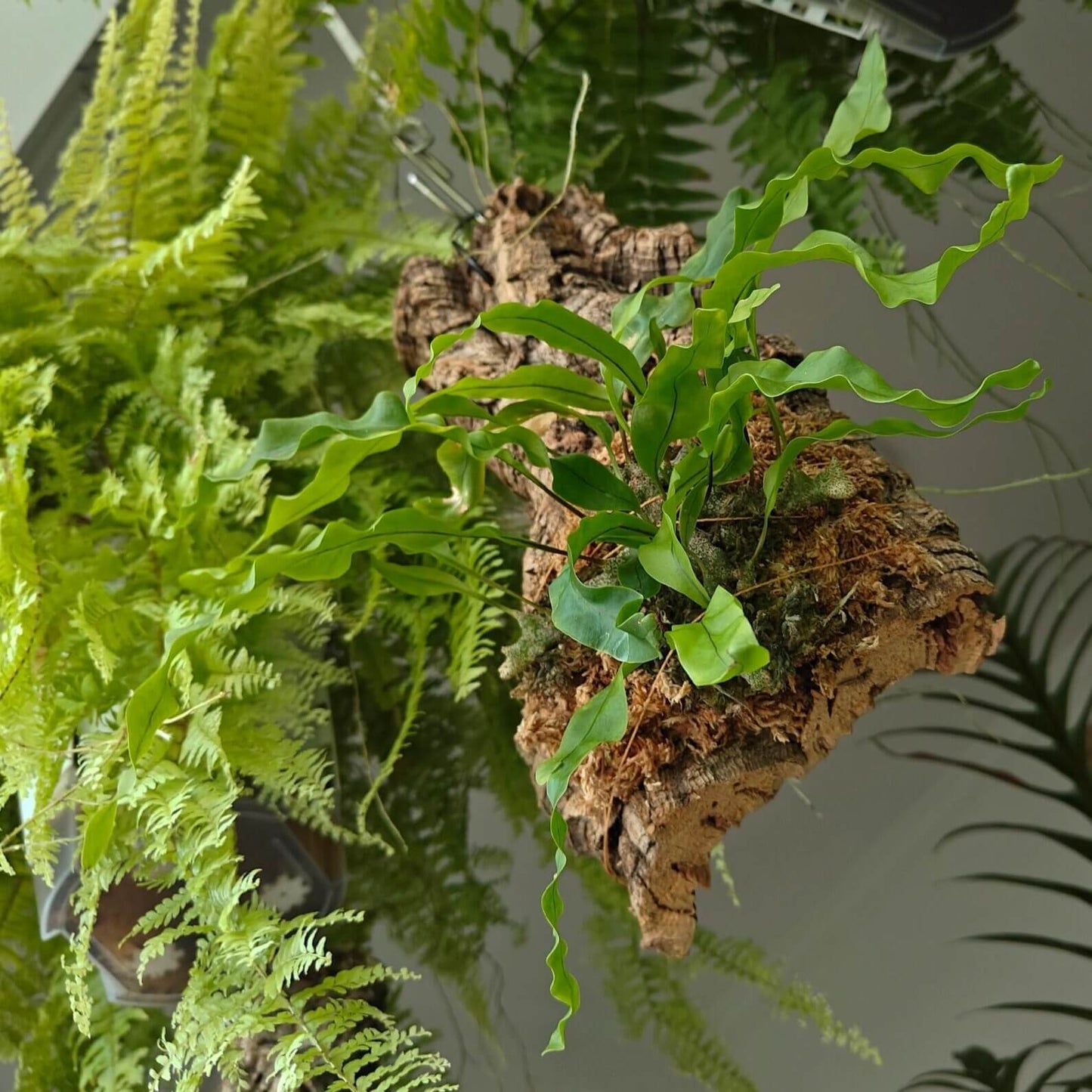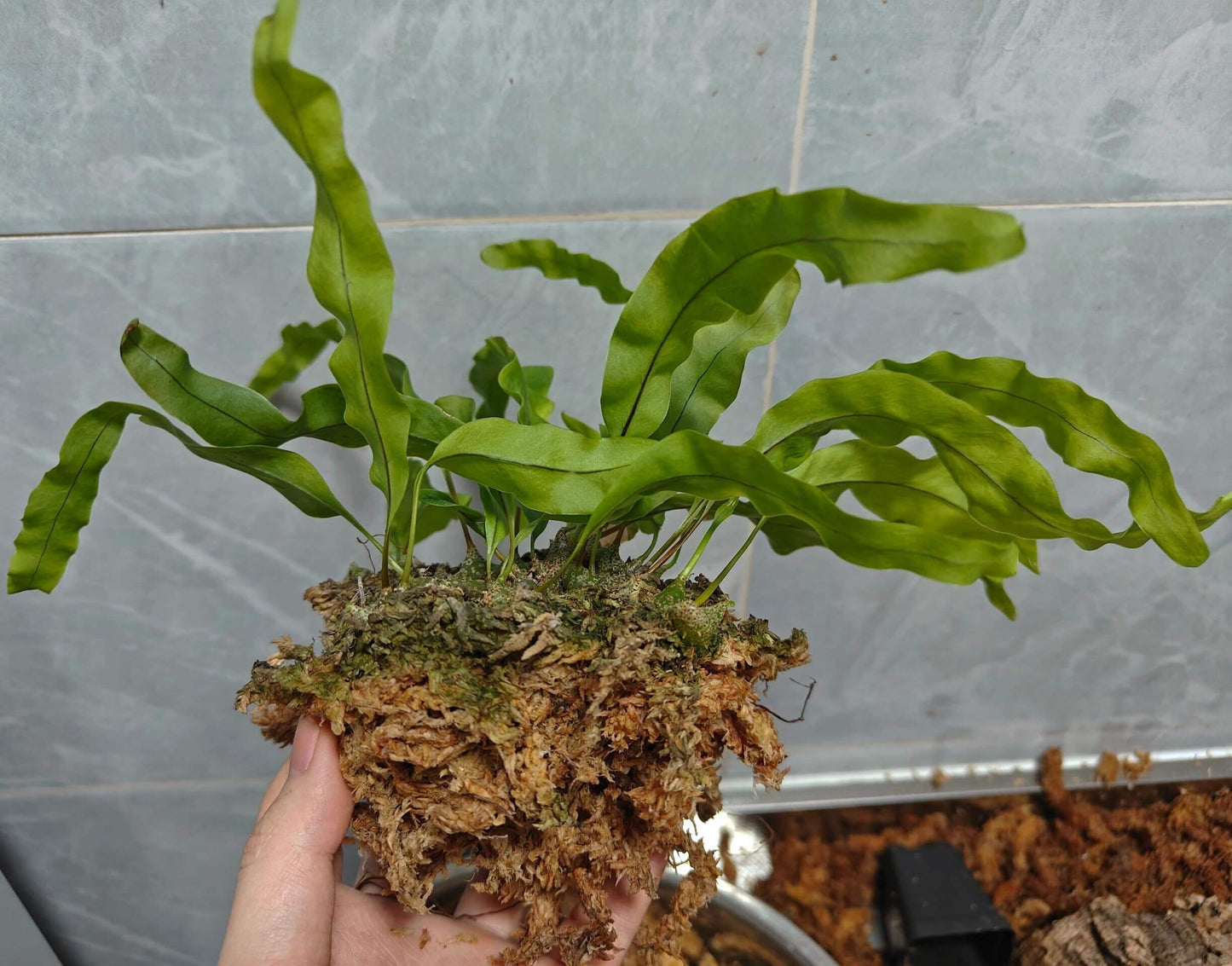Begin With Plants
Lecanopteris sinuosa 'Ant Fern'
Lecanopteris sinuosa 'Ant Fern'
Couldn't load pickup availability
Lecanopteris sinuosa is an epiphytic fern and a myrmecophyte, meaning it forms mutualistic relationships with ants. Young rhizomes are solid but hollow out as they mature, developing a hardened, rock-like structure infused with phlopaphene.
Features:
-
Ant Interaction: It is commonly associated with stingless ants (e.g., Crematogaster, Technomyrmex, Iridomyrmex), which nest inside the hollow rhizomes. In return, the plant benefits from protection against herbivores, improved spore dispersal, and nutrients from ant debris.
-
Distribution: Found across Malesia, Sulawesi, the Philippines, New Guinea, Indochina, Vanuatu, and Queensland, it thrives in diverse tropical habitats, excluding lowland rainforests.
-
Morphology: The plant features long, creeping branched rhizomes (1–2 cm thick) densely covered with scales. Fronds are simple, 15–38 cm long and 1–3.5 cm wide, with slightly wavy margins. Sori appear as round structures aligned in single rows beside the midrib.
Care Tips:
-
Light: Thrives in full sun to partial shade; adaptable to both bright and shaded conditions.
-
Water & Humidity:
-
Requires minimal watering—occasional misting or soaking is sufficient.
-
Must be well-drained—avoid prolonged moisture around the rhizome to prevent rot.
-
According to growers on Reddit: use sphagnum moss, drench when watering, and allow it to dry completely between waterings to mimic its epiphytic nature.
-
-
Temperature & Climate: Suited to wet tropical environments; no strict temperature data, but it is hardy and adaptable when humidity and airflow are appropriate.
-
Substrate: Best grown mounted or in airy media. Excellent drainage is essential; mounts like tree fern plaques or coarse sphagnum mixes work well.
-
Propagation: Can be propagated either via spore sowing or division of mature rhizomes, with division being more reliable.
Share





